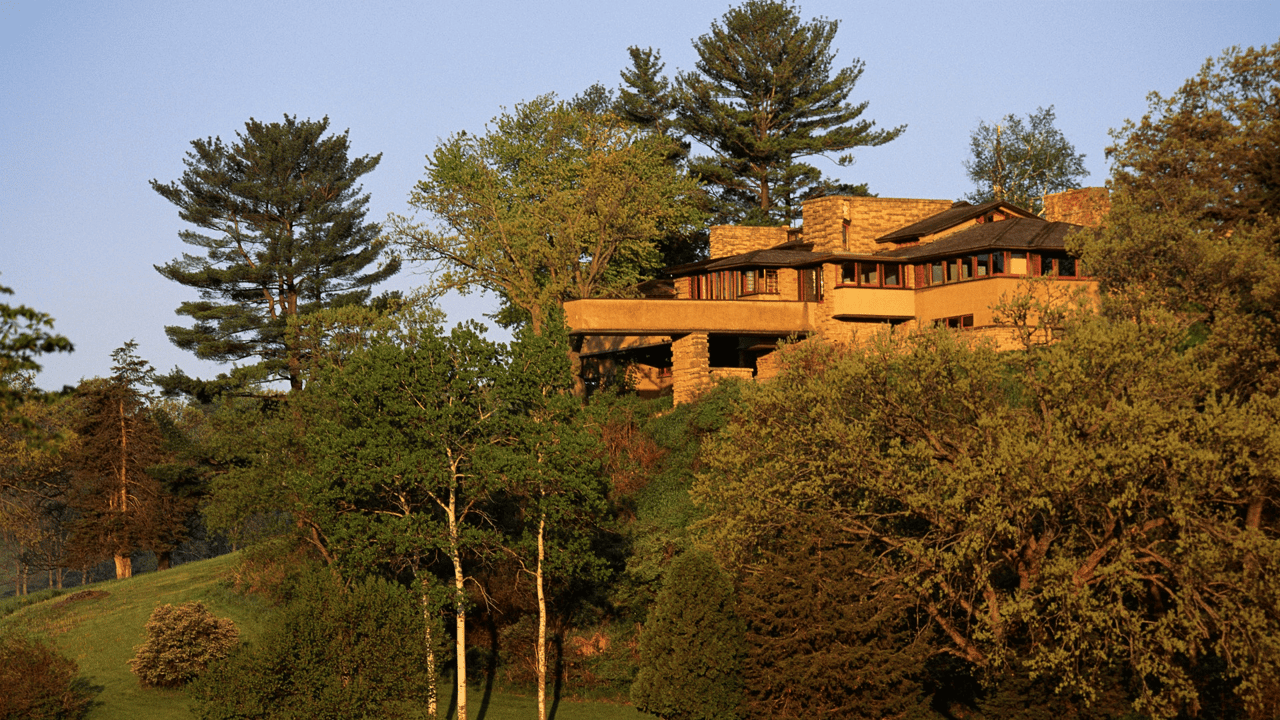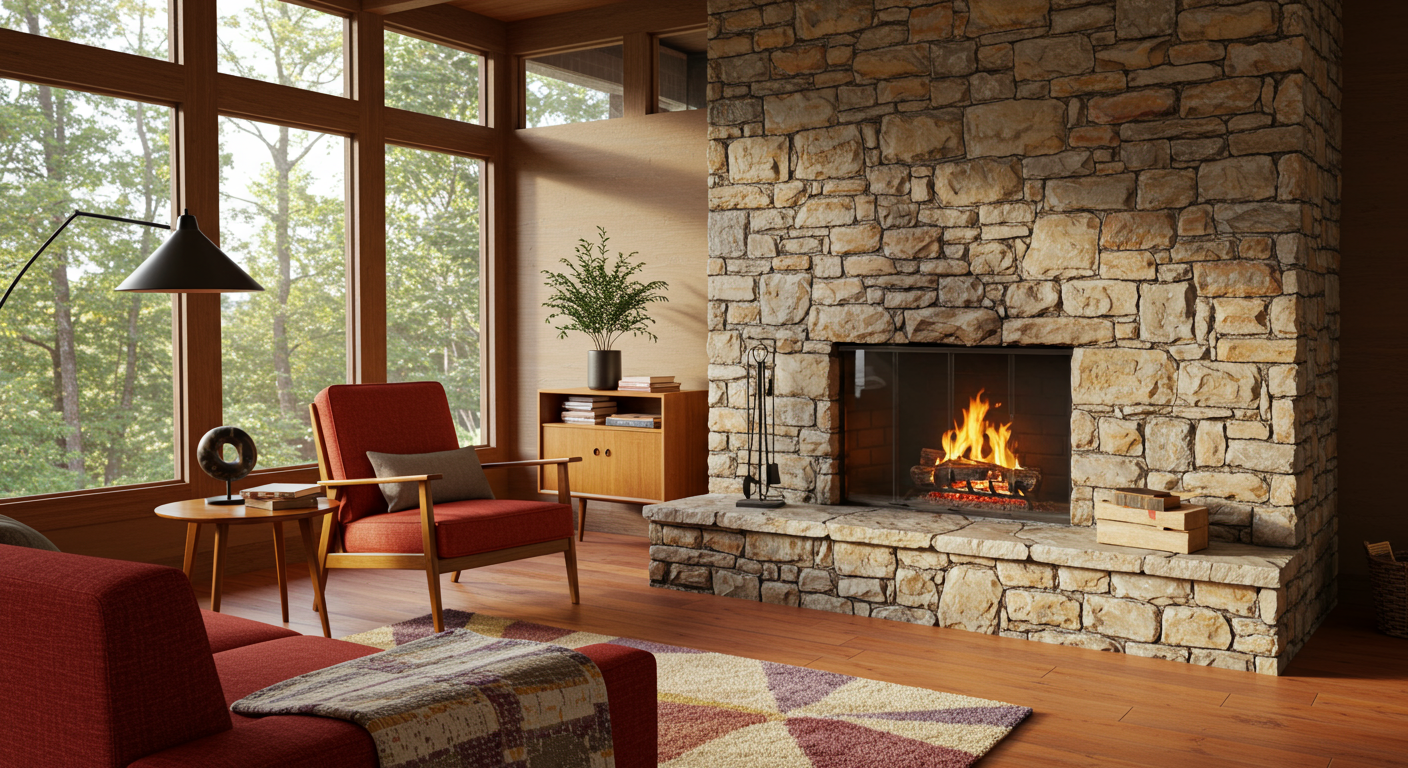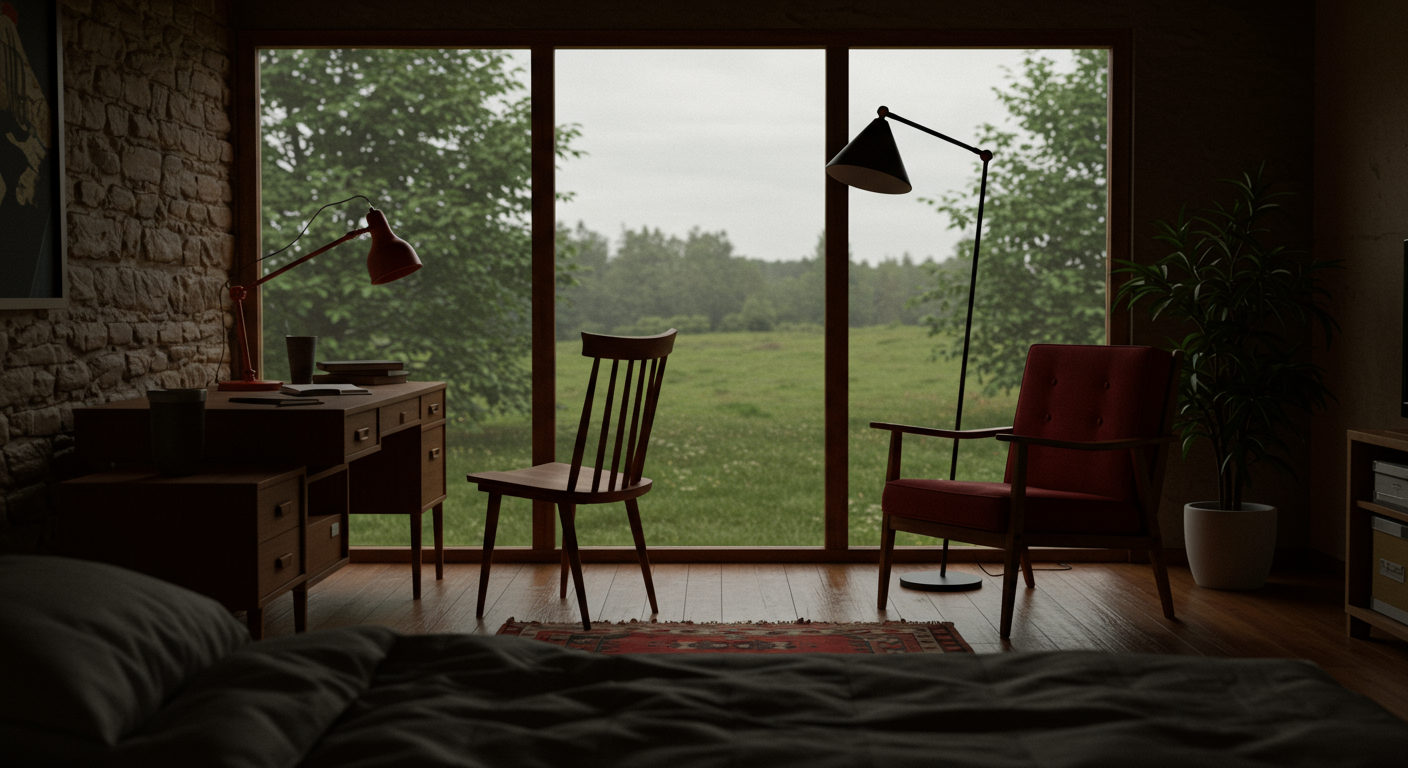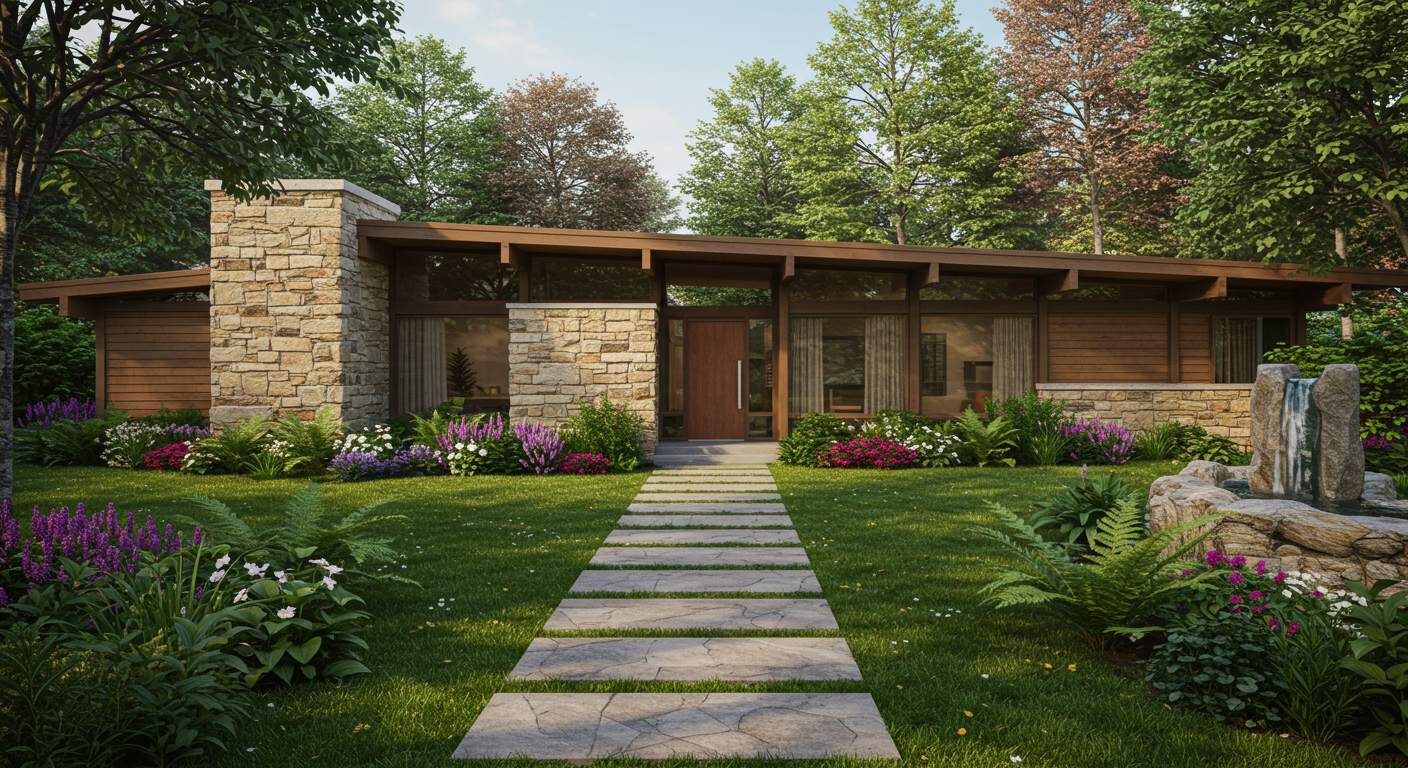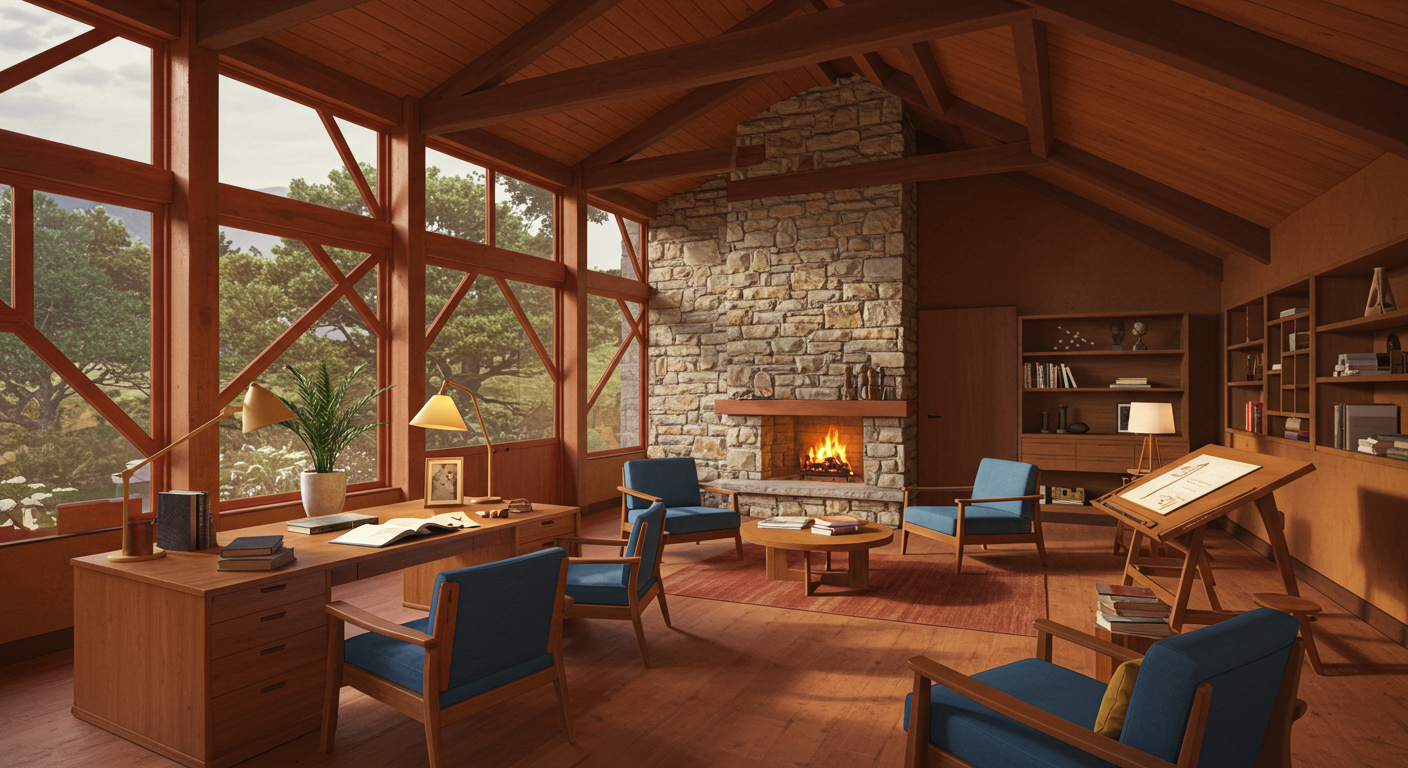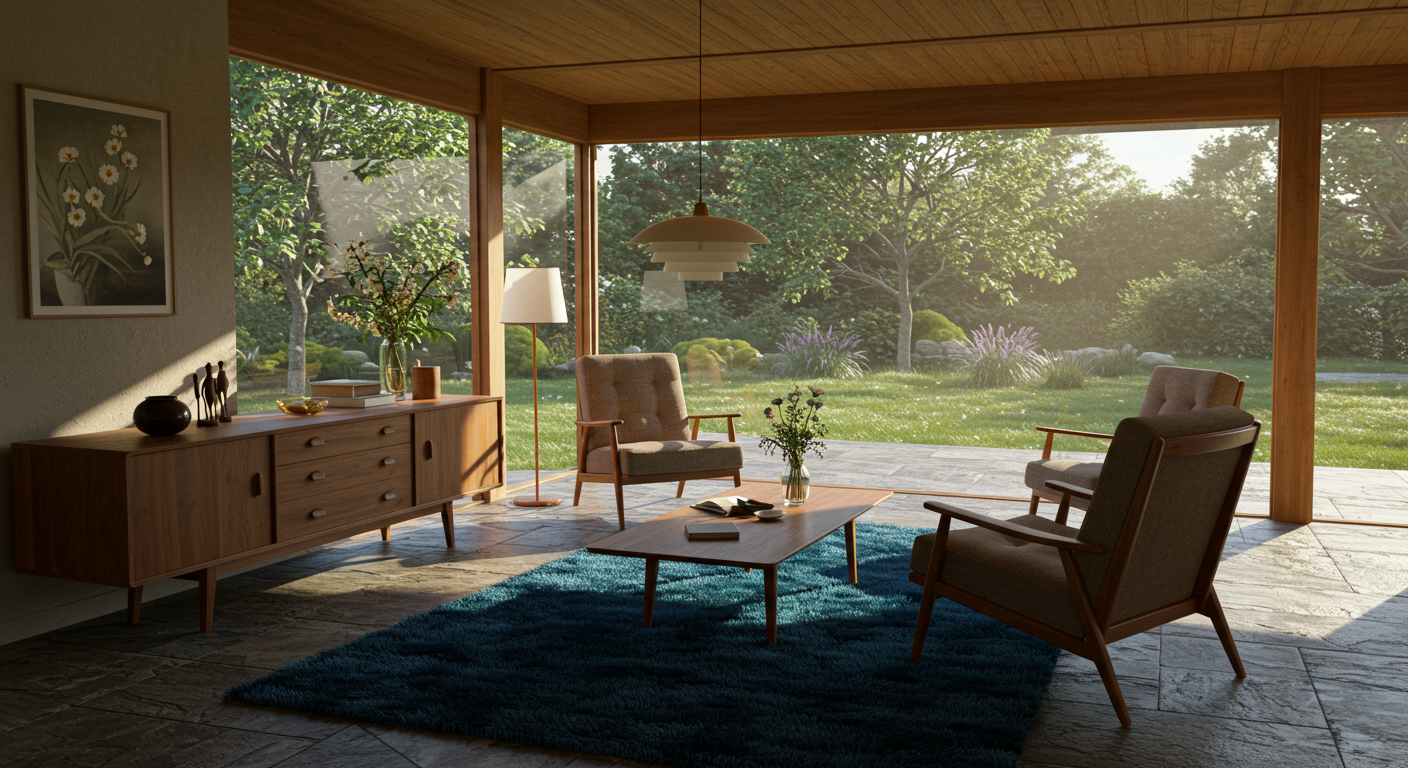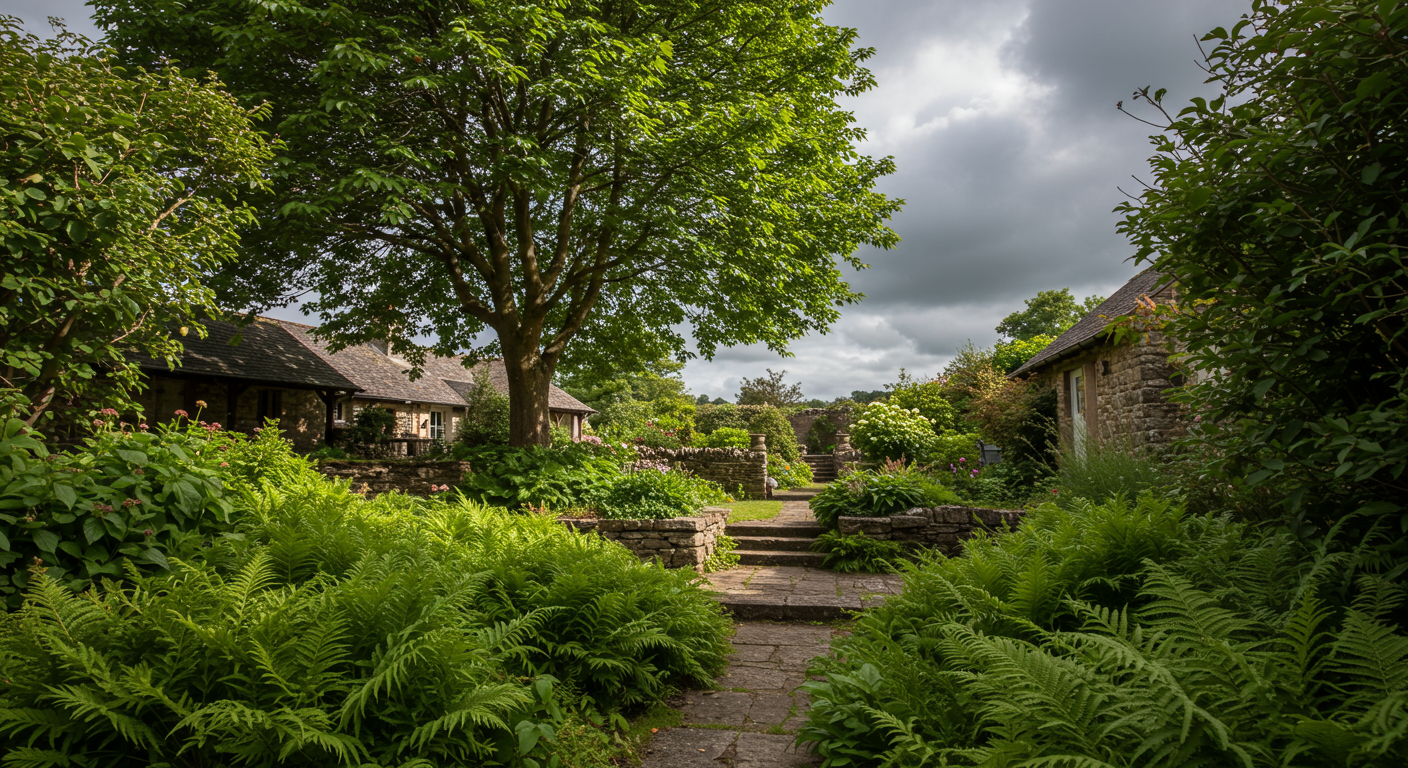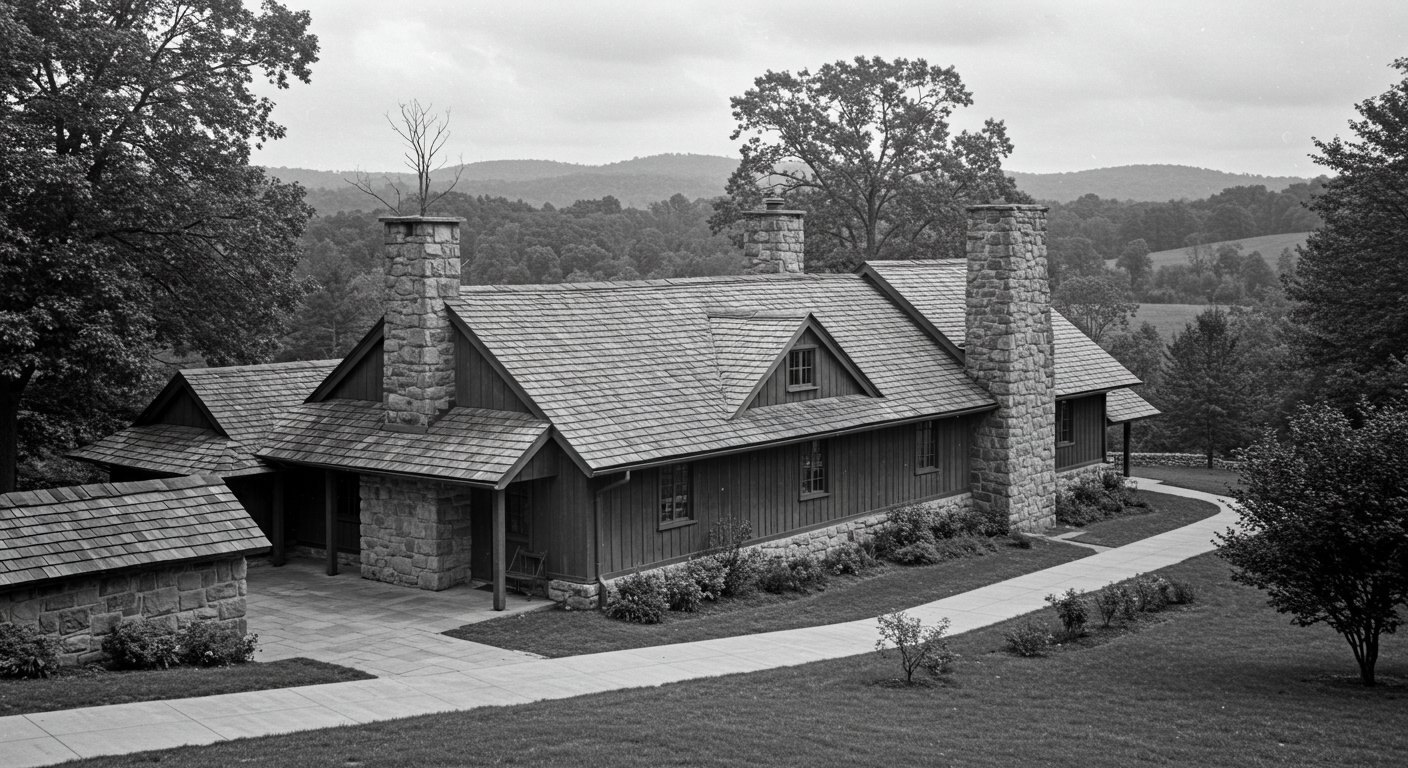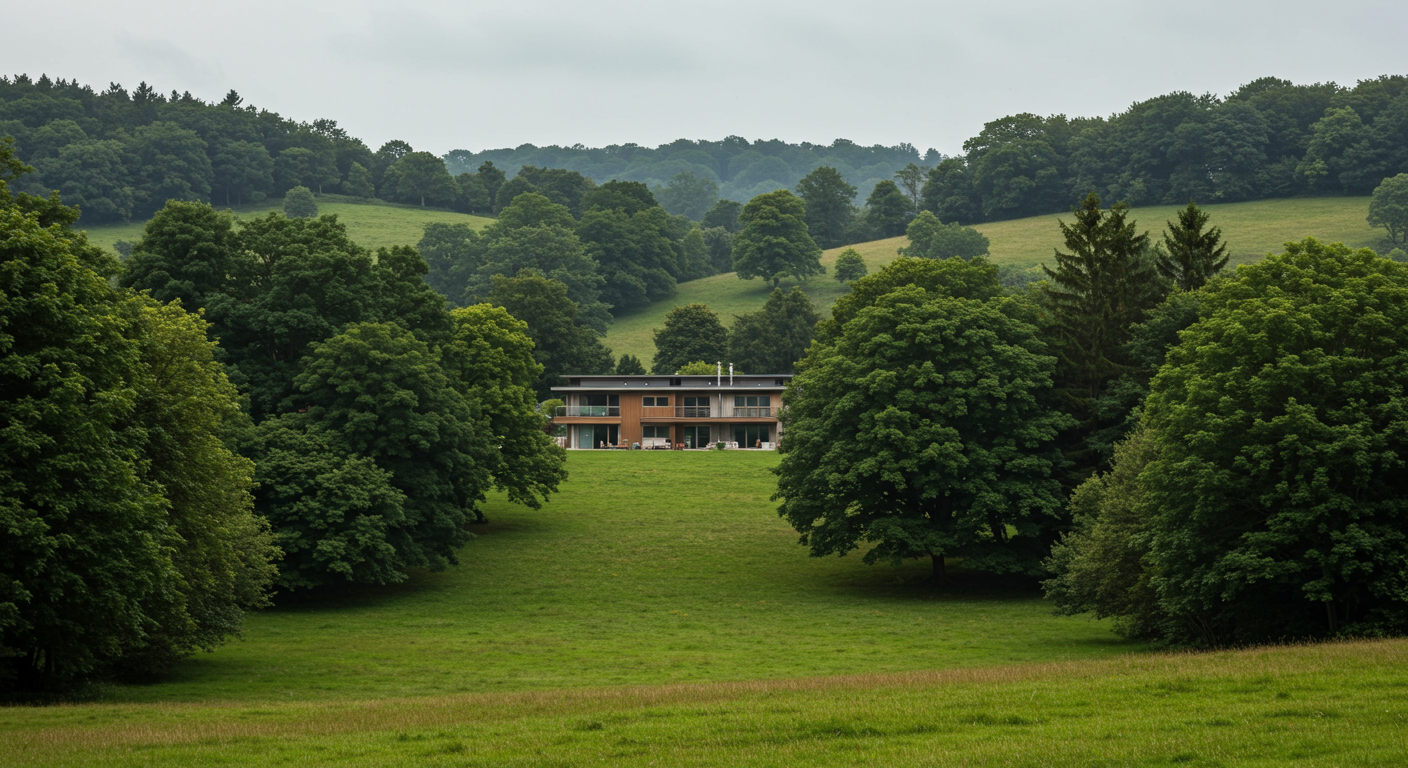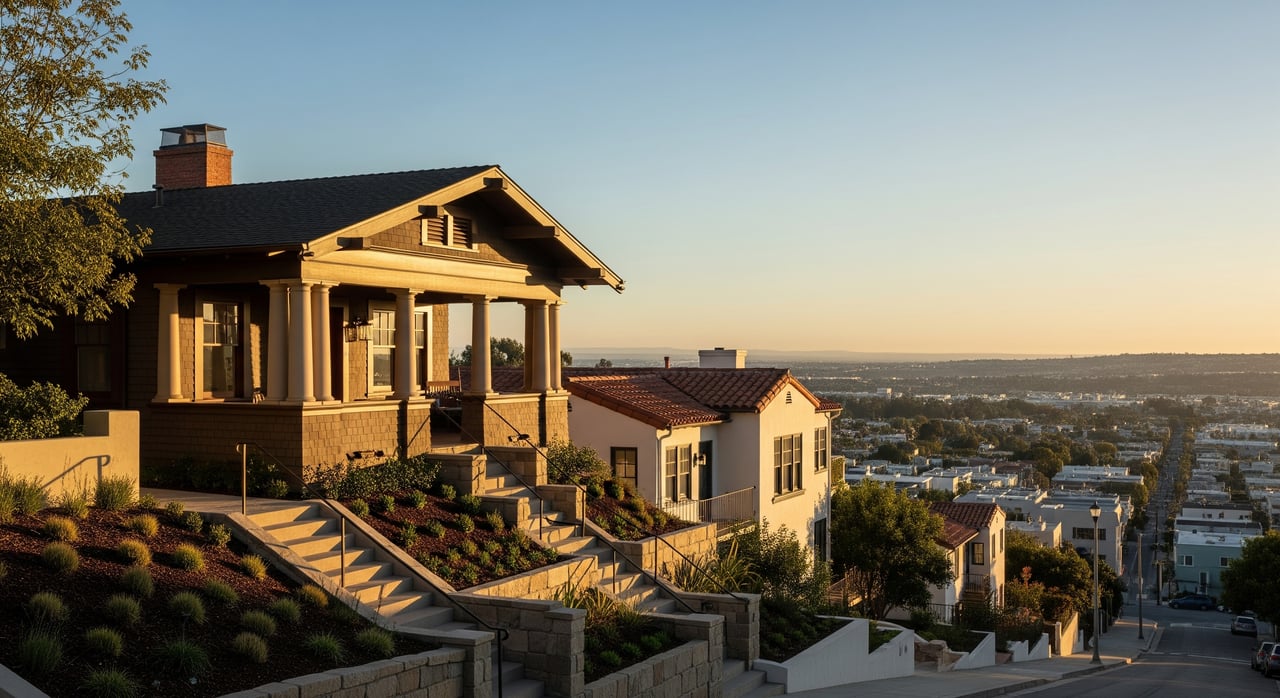When I was around 10 years old, I sat in an Arby’s in a suburban strip mall with my dad and sister with an important question in my mind: Why was there a tree in the middle of the restaurant? I’ve since learned, so many years later, that this is a fairly common motif in the fast-food chain for reasons I still don’t know, and even the person I assumed to have all of the answers, my dad, didn’t have a concrete response. But nearly two decades later, I still remember who he compared the design choice to. “It’s kind of like Frank Lloyd Wright,” he said.
I was thinking about this memory as I drove from Milwaukee to Spring Green, Wisconsin, to visit Taliesin, the architect’s Midwest estate, which encompassed his private residence, studio, and fellowship program. It’s always humored me that out of all the conversations I had as child that could have easily been filed away as inconsequential, my subconscious clung to this one. It’s almost as if it knew one day it would matter.
From that moment on, I had the vague understanding that Frank Lloyd Wright was an architect who had something to do with nature. I would learn more as I got older, but it would take a once in a lifetime experience—the chance to spend a weekend at Taliesin—to truly grasp what this meant.
Early this summer, I was among a small group of writers who traveled from all around the country to celebrate the reopening of Frank Lloyd Wright’s Hillside Theater following an incredible multiyear restoration project. Bookending the celebrations were two nights in the architect’s private residence, Taliesin, staying in rooms that had once belonged to his apprentices. It felt like the Louvre let me borrow the Mona Lisa for a few days or the royal family invited me to play dress up with the crown jewels.
I’ve visited Wright homes before, but only through guided tours and formal capacities. While I’d recommend them to anyone—they’re educational and entertaining—I was looking for the enlightening, the insight that can only appear through the unguarded normality of the mundane. Before my visit, I’d interviewed Wright homeowners who told me that the magic of his work sparkles most when they’re brushing their teeth and notice the complexity of a wood’s grain or get distracted by a family of birds outside the window while sipping coffee. They said that existing in his properties is a constant discovery of new and beautiful things, it’s peace with the natural world, and it’s the weight of the architect’s stratospheric legacy.
“His buildings can rarely be appreciated correctly, except at firsthand,” Philip Johnson wrote about Wright in 1949. “A photograph can never relay the experience of being surrounded by one of them.” As I pulled up to the angular stone residence, I was eager to see just how true this could be.
The estate is located in the Wisconsin River Valley, in a region known as the Driftless Area where the land retains an undulating profile unfamiliar to most of the rest of the Midwest. Thousands of years ago, dense ice masses ironed out most of what is now the central United States, but the glaciers never “drifted” to this small Northwestern pocket. The result is a texture that would have quickly strengthened my hamstrings had I grown up here instead of two states over to the southeast.
But I spent my childhood on flat land and most of my adult life in New York City, a fact that ensured I was that much more overwhelmed by the beauty of the rolling pastures. Though most of all, the scene made me believe that kismet must simply work harder in Wisconsin. Because once you understand Frank Lloyd Wright, you realize that these hills designed Taliesin just as much as the architect did. These hills that feel as if they shouldn’t even be here.
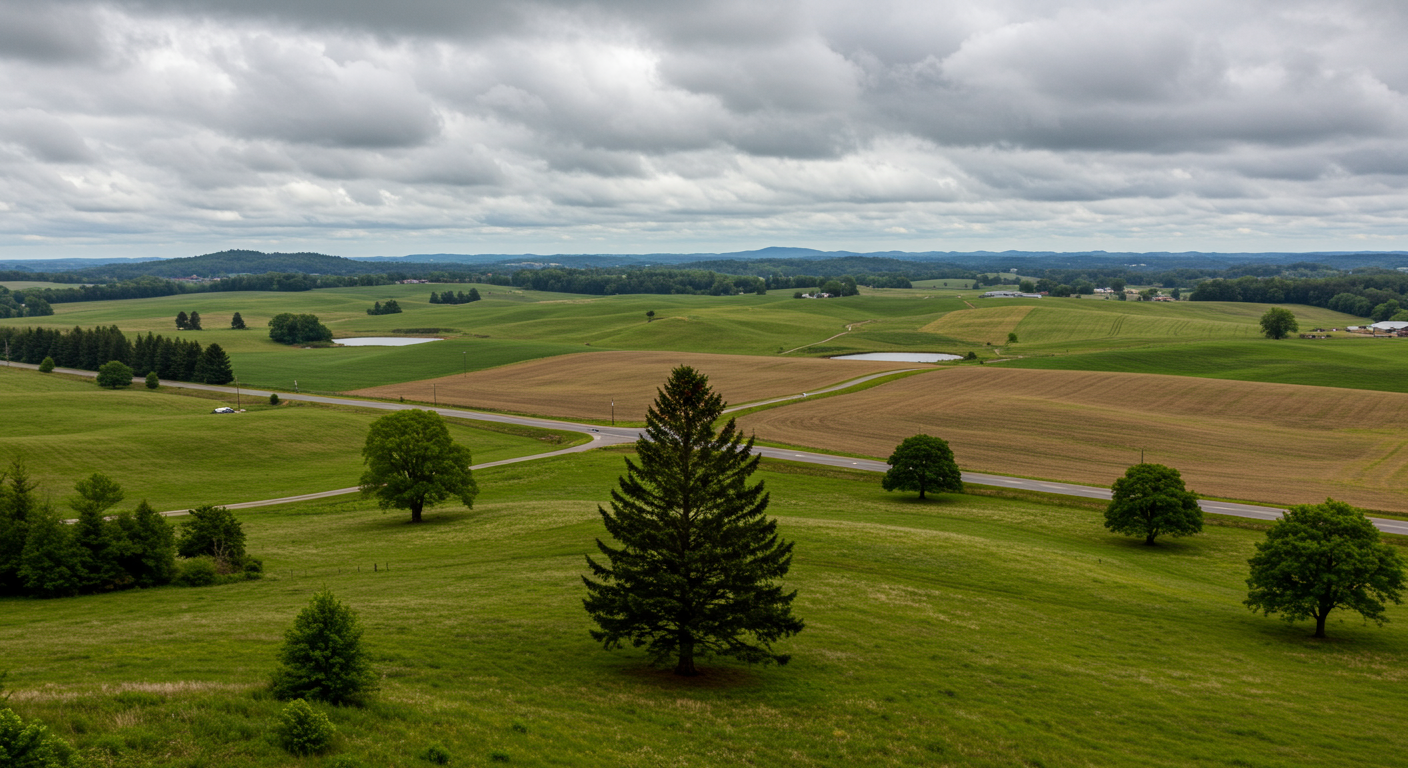
“I turned to this hill in the Valley as my Grandfather before me had turned to America—as a hope and haven,” the architect wrote in his autobiography about building Taliesin. “There must be some kind of house that would belong to that hill, as trees and the ledges of rock did; as Grandfather and Mother had belonged to it in their sense of it all.”
In 1911, when he set out to bring Taliesin to life, it only made sense for the structure to grow from the same landscape that raised him. Here, Wright crafted a long and low-slung home, with a hipped, overhanging roof and large stone masonry pillars. In his own words, it is “low, wide, and snug.” He believed that a home should be “of the hill,” not on the hill, so the residence is tucked into the terrain, its angles carved to fill the negative space of the valley’s natural lines. Rooms on the main level open directly to paved terraces and gardens while those on the backside float just over the slanted fields below.
“[Taliesin] was set so sun came through the openings into every room sometime during the day. Walls opened everywhere to views as windows swung out above the treetops,” Wright wrote about the home.
But it was not just constructed to fit the valley, it was made from the valley: Yellow limestone from a nearby quarry and sand from the Wisconsin river were combined to create the exterior walls, and plaster mixed with sienna was used for the interior walls. Rocks in their natural state form muscular chimney masses and cedarwood was cut into shingles and trim.
Following family traditions, he gave the residence a Welsh name, Taliesin, which translates to “shining brow.” As he wrote in his biography, “This hill on which Taliesin now stands as ‘brow’ was one of my favorite places when I was a boy, for pasque flowers grew there in March sun while snow still streaked the hillsides.”
To me, Taliesin is simple—incredibly so. Many would balk at this: They’d point to spaces, such as the living room, where non-traditional materials like plaster and glass appear to be load-bearing, something that would largely be considered impossible from an engineering perspective. Or the fact that the home was in constant motion—Wright changed, updated, and rethought the residence regularly until his death. They would be right, of course, but I don’t describe the home this way out of insult, but rather reverence.
The residence is simple in the same way the tide is; the way different tones ringing in harmony are. It doesn’t need to be understood to be appreciated, and, in fact, it’s often better when it’s not overthought. Some might say that Taliesin flows, but after spending time in the residence, I don’t necessarily believe that’s true.
For me, the home is much more riverbed than river. It provides shape to motion, but it’s the people who are the stream. Walking through Taliesin was easy, mostly because the home directs where you should go and how you should move. The view, for example, is often better when you sit down. I noticed it first at the small wooden desk in my guest room, then later in the living room, and again in the architect’s bedroom. Almost without thought, visitors are compelled to take a seat the same way water bends at a meander.
But if the home is the river, Wright is gravity, erosion, and every other force or phenomenon that forms the earth’s waterways. His auteurship is tangible everywhere. You admire the view he thought was best. The living room feels big, partly because it is and partly because the hallway that leads to it is cramped and dark. He did this often, strategically placing less-friendly spaces directly before those that were meant to be grand. He called this compression and release. There are obstacles—like a large stone fireplace, wood railings, or furniture—that force people to take specific paths.
You can find similar situations in many of Wright’s works. Take the Guggenheim, for example, which only offers one primary route via its spiraling white ramp. Or even the homes he designed for clients, which more often than not included built-in furniture—even if you wanted to rearrange things, you couldn’t. I don’t live in Wright’s work, so I can’t faithfully say whether this guiding hand is helpful or overbearing—it’s been argued both ways—but for a weekend spent trying to better understand the architect, there couldn’t have been a better lesson. After all, the moments when you feel most uncomfortable are in the places that lack everything Wright held dear: light, space, and a connection to The Valley of the God-Almighty Joneses.
In Wisconsin among Wright zealots, we talked about the architect’s clear intuition for sustainable design long before the term was commonplace, how he had a much more gifted engineering mind than most give him credit for, and the way his ideas still influence American houses today. When I was back home, conversations often turned to his reputation. “Wasn’t he kind of a mean guy?” friends would ask. Or if we did discuss his buildings, “Didn’t his roofs leak?”
Wright wasn’t all good or all bad (I’ve been told firsthand stories of his compassion and read many reports of his temper and ego), but it’s no use pretending his more salacious leanings aren’t what many connect to him. Recounting my trip made it clearer than ever that many see a difference between Wright the architect and Wright the man. One famous, one infamous, each made more relevant by the other. And in many ways, Taliesin is where these two polarities mingle.
Architecturally, the home is groundbreaking. Living in a world where so many of Wright’s concepts and ideas are now routine—the open floor plan or track lighting for example—it’s easy to forget just how revolutionary much of his work was when it was conceived. Taliesin was built when cars still resembled motorized carriages, when women wore hobble skirts, and men wore lounge suits. It was built before the Titanic sank. When considering the aesthetics of this time period, you don’t have to be an architectural historian—or even much of an architecture fan—to intuitively gather that Wright’s residence was vastly outside of the norm. It showcased ideas without reference points, the progenitor to so many design elements of American architecture that are now standard
But it was also designed on the heels of a huge personal scandal. In 1909, the architect left his Chicago-based studio, wife, and six children to be with a woman named Mamah Borthwick Cheney. She was a well-educated, progressive feminist who translated the writings of Ellen Key (a feminist Swedish scholar) and shared many social and intellectual views with Wright.
Their relationship was made even more scandalous by the fact that Borthwick was not just any lover, but the wife of one of the architect’s clients. After spending a year in Europe together, the pair were effectively shunned from Chicago society. They found—or more accurately made—their tabula rasa in the Wisconsin Hills. The media called it a “love nest,” the couple called it Taliesin.
Over the years, the home continued to be the site of many of his greatest professional accomplishments and, simultaneously, that of his personal tumult. It’s in this home that he designed Fallingwater (reportedly in just three hours after procrastinating on the project for weeks) and the Guggenheim. It’s where he started his fellowship program, which arguably fostered the most productive and innovative years of his life and educated many other architects who provided the world with incredible beauty.
It was also where Julian Carlton, a butler and handyman employed at the residence, carried out a horrific mass murder on August 15, 1914. Wright was away supervising work on Chicago’s Midway Gardens when Carlton doused the stone home in gasoline, lit a match, and attacked those inside with a hatchet. Borthwick, her two children, and four others died. Only two survived, and Carlton never made his motives clear.
It was a tragic event that would not only change the course of Wright’s life, but also his career. To the media and many public observers, the tragedy cemented the architect’s sinful character. Some newspapers went so far as to suggest that the flames were the act of a vengeful God and the price paid for an immoral relationship.
Had this never happened, it’s possible that, with time, the sting of Wright and Borthwick’s affair would have softened into something that resembled the apathetic. It’s also possible that, today, our perceptions of Wright would be very different.
Now, fires at Taliesin do not resemble death, but rather survival. Conservationists regularly set flames to the estate’s prairies as part of an ongoing effort to preserve both the building and the surrounding land as it was in the 1950s during Wright’s final decade. Burning plains is among the most effective ways to stimulate healthy, new growth and remove weeds or invasive species. Above ground, fire turns everything to ashes, but native plants have roots deep enough to live on.
Hearing this, I was compelled by the similarities between the charred meadows and the home I was sleeping in. When Taliesin burned in 1914, it was as if both it and Wright belonged to the land, with roots so deep they could withstand the temporary heat and bloom again. “I shall set [Taliesin] up again for the spirit of the mortals that lived in it and loved it—will live in it still. My home will still be there,” Wright wrote to his neighbors shortly after laying Borthwick to rest. In 1925, the home burned once again, this time due to an electrical fire, and Wright, once again, rebuilt from the ashes. “Taliesin lived wherever I stood!” he said about the third iteration.
When I think back to the day with my dad in Arby’s, I remember that my first impression of Wright had to do with his connection to nature. As I got older, I understood it in terms of the aesthetics of his designs: how his homes used natural materials, how they were meant to appear as one with their settings, and how they connected inhabitants with the exterior world as much as possible. At Taliesin, I realized that perhaps organic architecture didn’t just mean living with nature, but living like nature.
Individual parts of an ecosystem rarely understand the motives of others. A bird’s flight is incomprehensible to the burrowing of a prairie dog, a snake’s desire for meat is unclear to a grazing deer. Nature rewards instinct over logic; it favors survival over emotion. I see these same qualities in Wright. He was a bird, unperturbed what a prairie dog might think.
Where neighbors saw an extramarital affair or prideful man, Wright saw two people living their most honest truth, outside of man-made rules that neither chose to believe in. I don’t say this to pardon—his choices undoubtedly hurt others—but rather in search of an explanation. “This noble woman had a soul that belonged to her alone—that valued womanhood above wifehood or motherhood,” Wright wrote in the aforementioned letter to his neighbors. “We have lived frankly and sincerely as we believed and we have tried to help others to live their lives according to their ideals.”
Where the world saw boxy rooms stacked atop each other and covered by a cone-shaped roof, Wright saw homes with the grace of rolling hills and open space. It means that the same mind that could create buildings unlike anything that had existed before could also make choices and act in ways that are difficult for many others to rationalize.
When I arrived at Taliesin, I was eager for insights about Wright’s designs. Looking back, it was naive to think that sleeping in his personal residence—one which has been described as an “architectural autobiography”—wouldn’t also shed light on the person who created it. His impact on the built environment doesn’t excuse his actions, but I realized that perhaps both were born from the same place: a fundamentally different view of the world. Sometimes, this was to the benefit of those around him, sometimes not. And though it’s easy to want to distinguish Wright the man and Wright the architect, they no longer feel so different. After all, Taliesin was built of the hill, with the hill, connected to the hill. It was never on the hill.
Text by Katherine McLaughlin
